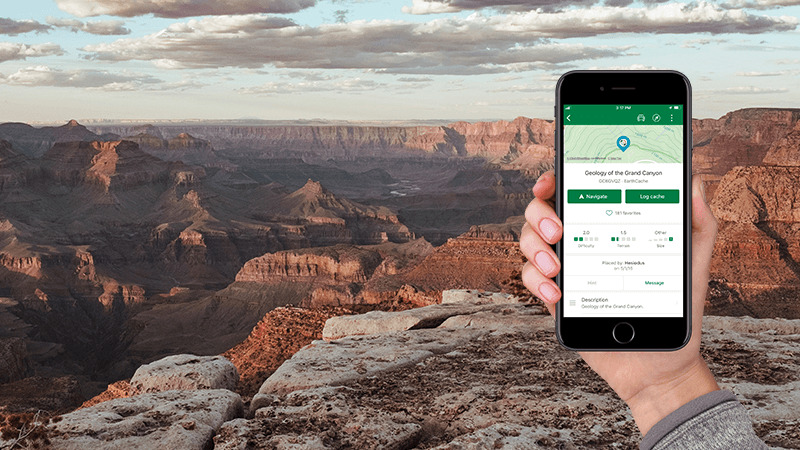
New hiding guidance for EarthCaches
As the EarthCache™ program celebrates its 20th anniversary this year, Geocaching HQ has partnered with the Geological Society of America (GSA) to bring new hiding guidance for EarthCache enthusiasts. We hope these suggestions help address some community feedback to keep EarthCaches a wonderful way to explore geological wonders.
Geocachers have consistently shared with HQ and the GSA that they love that EarthCaches take them to amazing places and provide education about interesting geologic phenomena. However, increasingly, we also get community feedback that EarthCaches are becoming more complicated and time-consuming for finders. Here are a few noteworthy statistics from the EarthCache data:
- Since geoaware (Gary Lewis, the first EarthCache reviewer) placed the first EarthCache (GCHFT2) on a headland in New South Wales, Australia, on January 10, 2004, hiders have placed more than 73,000 EarthCaches all over the world!
- EarthCaches comprise less than 6% of all geocache finds, a significant drop from 14% of all finds in 2011.
- EarthCache cache descriptions average around 12,000 characters today, almost three times higher than the first year that EarthCaches were widely available. That may be one explanation for why the per-year find rate steadily decreases the more recently an EarthCache has been published. For example, last year, EarthCaches published in 2009 were found twice as often as EarthCaches published in 2020.
- EarthCache hiders now comprise 1.15% of all hiders compared to 2.13% in 2010.
The GSA’s primary mission for the EarthCache program is to encourage geocachers to interact with Earth science around them. The more people who are experiencing EarthCaches, the better! This does not necessarily mean that EarthCaches must always be simple, “easy” geocache finds. However, they should aim to be as accessible and enjoyable for players as possible within the chosen difficulty and terrain ratings.
Per the EarthCache guidelines, EarthCache submissions must:
- Assume finders have only a basic knowledge of geology.
- Contain nontechnical explanations of what finders will see at the site.
In addition, the GSA and Geocaching HQ are making these suggestions to EarthCache hiders:
- Limit logging tasks to three (3) (plus photo, if desired). Again, the primary goal of an EarthCache should be to highlight a unique feature. Be mindful that asking too many questions may result in an EarthCache that is more complicated than necessary.
- List logging tasks at the top of the cache description. This allows finders to know right away what to keep in mind as they’re reading the lesson and viewing the location.
We hope that EarthCache hiders will consider these suggestions as they create their cache listings. We are also excited to share a conversation with Matt Dawson of the GSA about these suggestions and other EarthCache topics in a new Inside Geocaching HQ podcast episode.
As we celebrate 20 years of EarthCaches and look forward to the next 20, experience Earth science for yourself by finding an EarthCache near you! Do you have a favorite EarthCache or one that’s on your bucket list? Tell us about it in the comments below.
